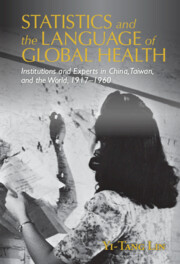 Statistics and the Language of Global Health
Statistics and the Language of Global Health Book contents
- Statistics and the Language of Global Health
- Global Health Histories
- Statistics and the Language of Global Health
- Copyright page
- Dedication
- Contents
- Figures
- Tables
- Acknowledgments
- Note on Language
- Abbreviations
- Introduction
- 1 The Call for a Language of Public Health
- 2 The Language and Dialect of Health Science
- 3 The Language of Health Administrations
- 4 The Language of Policy-Making
- 5 Popularization at a Global Scale
- 6 The Art of Rhetoric
- 7 Another Way of Speaking?
- Conclusion
- Glossary of Chinese Key Terms
- Bibliography
- Index
- References
Bibliography
Published online by Cambridge University Press: 27 October 2022
- Statistics and the Language of Global Health
- Global Health Histories
- Statistics and the Language of Global Health
- Copyright page
- Dedication
- Contents
- Figures
- Tables
- Acknowledgments
- Note on Language
- Abbreviations
- Introduction
- 1 The Call for a Language of Public Health
- 2 The Language and Dialect of Health Science
- 3 The Language of Health Administrations
- 4 The Language of Policy-Making
- 5 Popularization at a Global Scale
- 6 The Art of Rhetoric
- 7 Another Way of Speaking?
- Conclusion
- Glossary of Chinese Key Terms
- Bibliography
- Index
- References
Summary
- Type
- Chapter
- Information
- Statistics and the Language of Global HealthInstitutions and Experts in China, Taiwan, and the World, 1917–1960, pp. 231 - 253Publisher: Cambridge University PressPrint publication year: 2022
- Creative Commons
- This content is Open Access and distributed under the terms of the Creative Commons Attribution licence CC-BY-NC 4.0 https://creativecommons.org/cclicenses/
